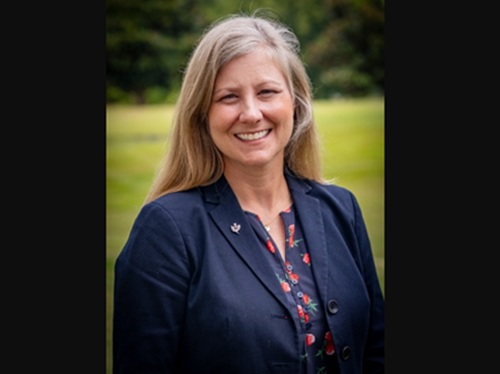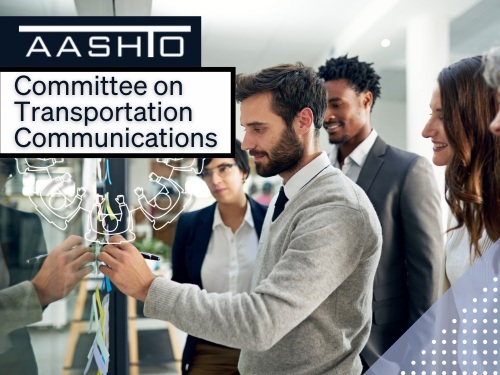
The American Association of State Highway and Transportation Officials along with the International Bridge, Tunnel and Turnpike Association held a free live-streaming webinar on May 14 entitled The State of Highway Investment: Plans, Promises and Predictions, focusing on both current trends and future plans for federal, state, and local surface transportation investments – especially in terms of what’s happening now with “road dollars” and what’s likely to happen in the near future.
Pat Jones, IBTTA’s executive director and chief executive officer, along with Jim Tymon, AASHTO’s chief operating officer and director of policy and management, joined and Weifeng Zhong, research fellow-economic policy studies at the American Enterprise Institute, to examine the challenges and opportunities ahead in the U.S. where highway funding efforts are concerned.
“Since President Trump started his push for ambitious spending on infrastructure, one big issue has been how to pay for it,” noted Zhong. “Economists have a broad consensus that user charges are the most efficient way to fund construction and maintenance of infrastructure. Now, every time a car gets on the road, the driver incurs private costs – such as fuel consumption, vehicle depreciation, and a driver’s time – along with societal costs, such as damage to the roadway and increased congestion. Without user fee, drivers would just pay private costs, not societal costs – what economists call ‘externalities.’ Thus user charges are a means to correct those inefficiencies.
He believes tolls can most directly tie user charges to the societal costs involved in roadway upkeep and expansion.
“[Fuel] taxes are failing in this respect because the obvious drawback is the higher fuel efficiency of today’s vehicles or those that don’t use fuel at all do not pay enough for all of the societal. That’s why tolls are charges can most directly approximate to the social cost incurred by the driver makes the system more efficient – economically sound idea to fix infrastructure,” Zhong said.
Yet he emphasized that tolls are anything but popular. “It’s the psychology of paying tolls; it’s difficult. But people’s objections are mostly temporary – once implemented, they tend to come around,” he said.
For example, the month before London imposed roadway tolls for its inner city in 2003, some 41% of the drivers polled were against it. But the month after they were implemented, that number dropped to 27%. “The moral of the story is that people start to come around once they are implemented,” Zhong pointed out.
The reason tolls are being highlighted with such prominence, noted AASHTO’s Tymon, is that the Highway Trust Fund – established back in 1956 to provide roadway funding via the collection of federal fuel taxes – is going broke.
“Since 2008, [HTF] receipts no longer support spending – we’re spending $15 billion more than we’re bringing in with [fuel tax] revenue,” he explained. “The fund is relying on gasoline and diesel taxes – 18.4 cents and 24.4 cents, respectively – for 90% of its revenue and they haven’t been raised since 1993. They’ve lost significant purchasing power and as cars have become more fuel efficient –that includes the use of more hybrid and electric vehicles – they consume less fuel than vehicles on road 25 years ago. That means less tax revenue per vehicle and per household. So to date, Congress has spent $140 billion from the general fund to keep the HTF solvent.”
Yet IBTTA’s Jones stressed that fuel taxes are designed to provide “system funding,” while tolls tend to be for specific transportation projects. “So we’re likely not going to see fuel taxes go away, to be replaced by tolls,” he said. “They are complimentary fees.”
He believes lifting the ban on tolling existing interstates will help with the purpose of highway reconstruction. “It will give states one more tool in their toolbox,” Jones said. “Tolling and price-managed lanes are a perfect way to use this. We see more state and local governments recognizing them as a way to bring in project revenue faster, reduce congestion, and provide ‘premium service’ on express lanes with linkages to tolls.”
AASHTO’s Tymon added that the federal fuel tax, which “has served country very well over the last 60 years,” will remain the “primary source” of highway funding at least in the short term. “It is still the most efficient way collect revenue from users [and] we need to rely on the [fuel] tax for the next 10 plus years to keep federal funding going. We can work with tolls, but tolls will be limited to certain circumstances. Yet with most of our highways built over 50 years ago, we will need additional revenue in order to maintain them.”
 AASHTO
AASHTO
McGraw New AASHTO Maintenance Committee Vice Chair
July 3, 2025 AASHTO
AASHTO

